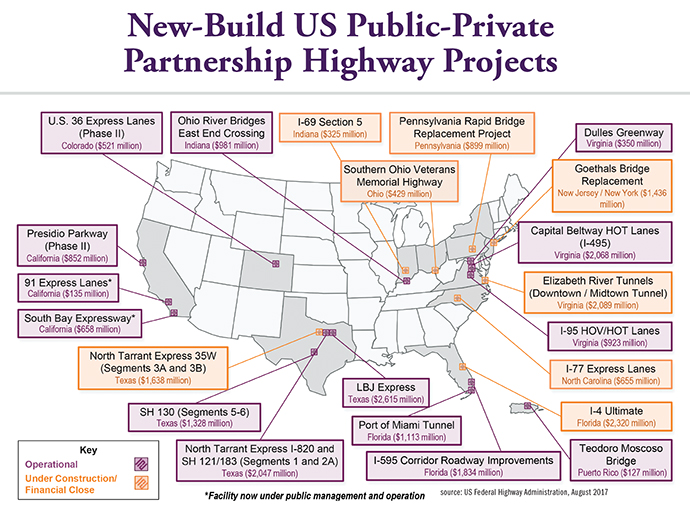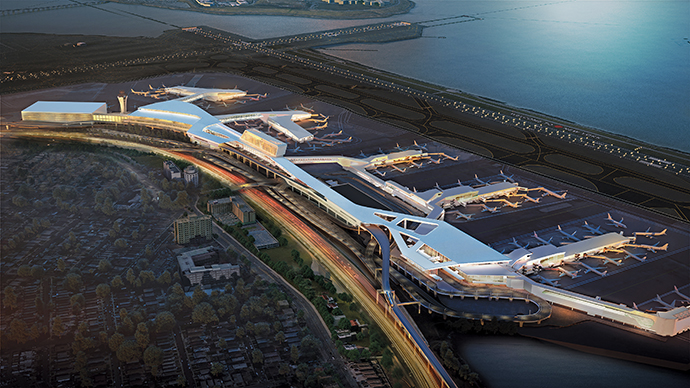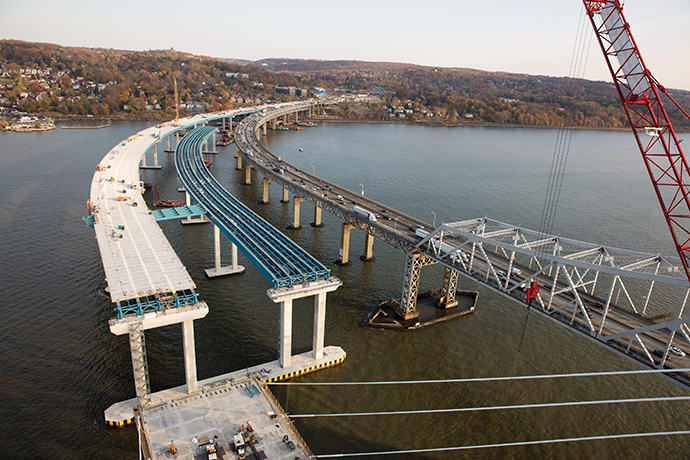Jamie Breme is Director, Project Communications, Corporate Affairs, at Fluor.
To understand where the United States Public-Private Partnership (P3) market is going, you have to review where it came from. History tends to repeat itself, and learning from the market’s past will aid the Trump Administration as it begins to shape its “Trillion-Dollar Infrastructure Initiative.”
The US P3 market emerged in the mid-’90s, when private-sector engineering, procurement and construction firms approached states with enabling P3 legislation and presented proposals to deliver mega infrastructure projects ahead of what the states had envisioned. Having the ability to make step change investments in infrastructure, versus incremental fixes, enabled the state to increase commerce and therefore enhance tax benefits back to the state. While these unsolicited proposals ultimately resulted in the delivery of many excellent projects, the states had little to no staff to manage the complex nature of P3s, and lacked the overall strategic program vision.

To correct course, many states began to question this alternative delivery method and adjust the legislation in an effort to better manage P3s. The most successful states established program offices that allowed the private sector to gain confidence in the state’s ability to deliver megaprojects. This included structured contracting methodologies, and staff familiar with implementing these complex projects.
As the P3 market matured over the last decade, states began to move away from unsolicited proposals and shifted toward a competitive bid process. The industry responded to this market shift, and companies like Fluor have been able to deliver innovative heavy-civil projects years ahead of the status quo. As confidence in the P3 market grows and more states enable legislation, we believe there is a willingness to embrace large-scale projects. This market timing appears to align with the Administration’s Infrastructure objectives.
Where to Turn Next
When we start to look into the horizon of the Trump Administration’s infrastructure initiative, there is still uncertainty as to what will be included, but there is reason for optimism due to the robust pipeline of projects. While the details of the Trump program are subject to a political process, we applaud the Administration for starting the conversation and support this strong contributor to economic and long-term prosperity. We encourage Congress and the Administration to seek opportunities that:
- Streamline and expedite the Environmental Review Process, resulting in efficient processes that deliver more timely investments desperately needed by the states.
- Provide federal incentives for states to adopt the P3 model, thus accelerating the utilization of private investment into new infrastructure.
- Remove statutory barriers on Private Activity Bond Financing programs, including increasing the cap on current surface transportation and eliminating the Alternative Minimum Tax penalties.
- Expand support for the existing federal funding and loan programs such as TIFIA (Transportation Infrastructure Finance and Innovation Act).
- Ensure a sustainable long-term investment in the Highway Trust Fund.
- Work to keep the Highway Trust Fund solvent.


As we approach the Administration’s Trillion-Dollar Infrastructure Initiative, we can assume the private sector will be asked to come to the table with revenue financing in place and the ability to quickly start up projects. The current market reflects few tolling revenue projects in the pipeline as states have shifted to availability payments, thus creating a potential gap in the Administration’s plans.
While the Trump plan is broad and the federal government support is in place, private-sector firms need to stand ready to respond to the market demands. We know the states are now deeply motivated to deliver P3 projects.

Fluor recently completed two P3 projects in Virginia, the 495 and 95 Express Lanes. These projects showcase our 20-year legacy of providing well-structured and executed projects backed by the types of security packages and guarantees needed to effectively insulate investors from design-build and operations and maintenance risk. It is our hope that the Administration can look to these types of projects as strong examples of what the private sector and government can deliver when partnered together.
We encourage the Administration to look at states such as Virginia as leaders in the industry and utilize lessons learned to shape the future of the P3 market. These lessons include:
- P3 project development is worthy of support, as it gives state and local governments an alternative project delivery method to advance critical infrastructure needs.
- P3s are successful when the public sector has project champions to minimize misconceptions. A strong statutory environment with enabling legislation is the foundation for implementing successful P3s.
- Transparency and communication are fundamental in developing P3s, as the public sector and their stakeholders need to clearly understand the complex nature of these projects.
- Stakeholder support is key to advancing mega infrastructure P3s.
- By using “best value” P3s, projects can be delivered with high quality, safety and reliability to meet stringent standards.
As we move forward into the next few months awaiting the concrete details on the Administration’s Infrastructure Initiative, we believe the private sector needs to be ready, nimble and flexible to respond in order to deliver what this country needs: new infrastructure that will last for generations to come.
